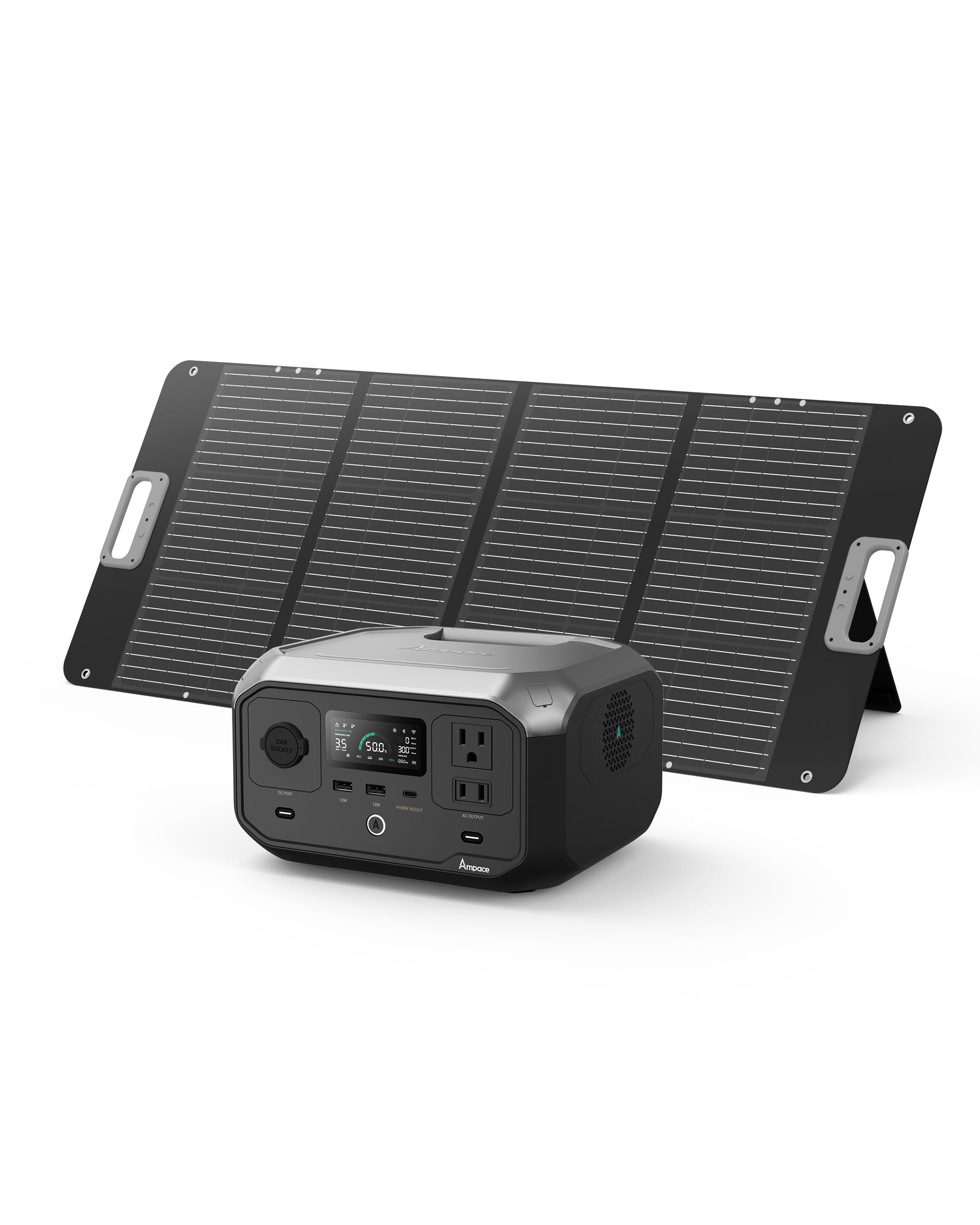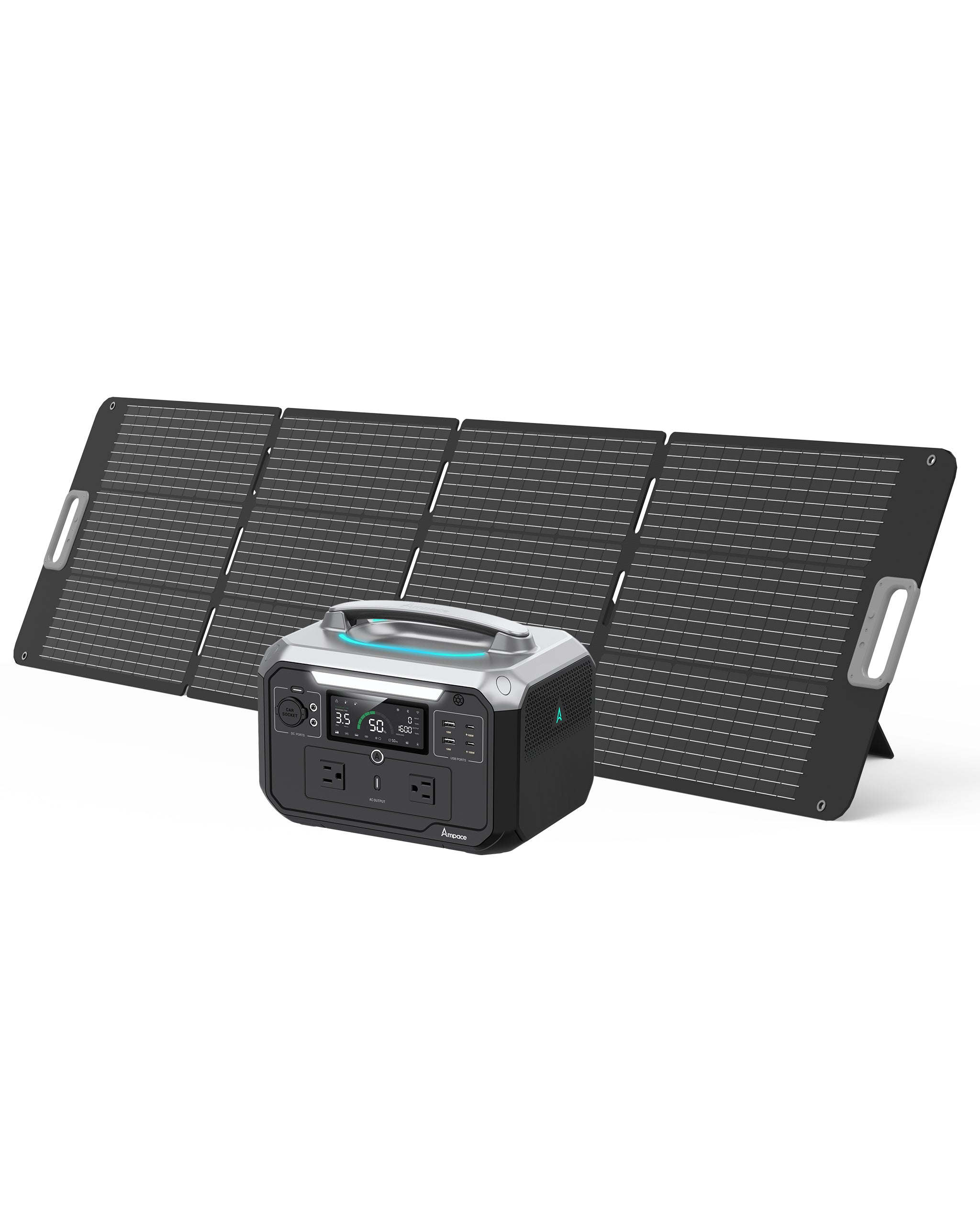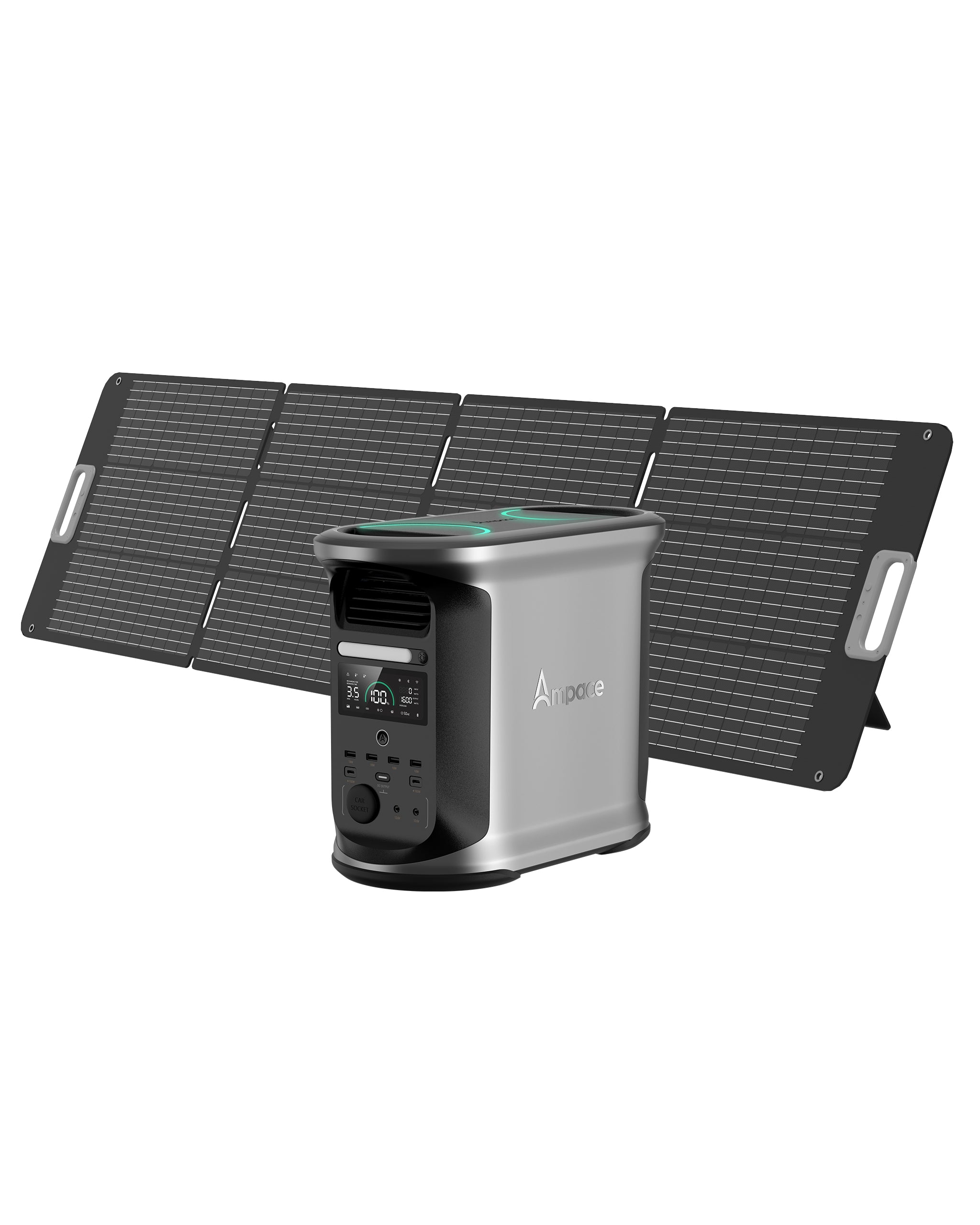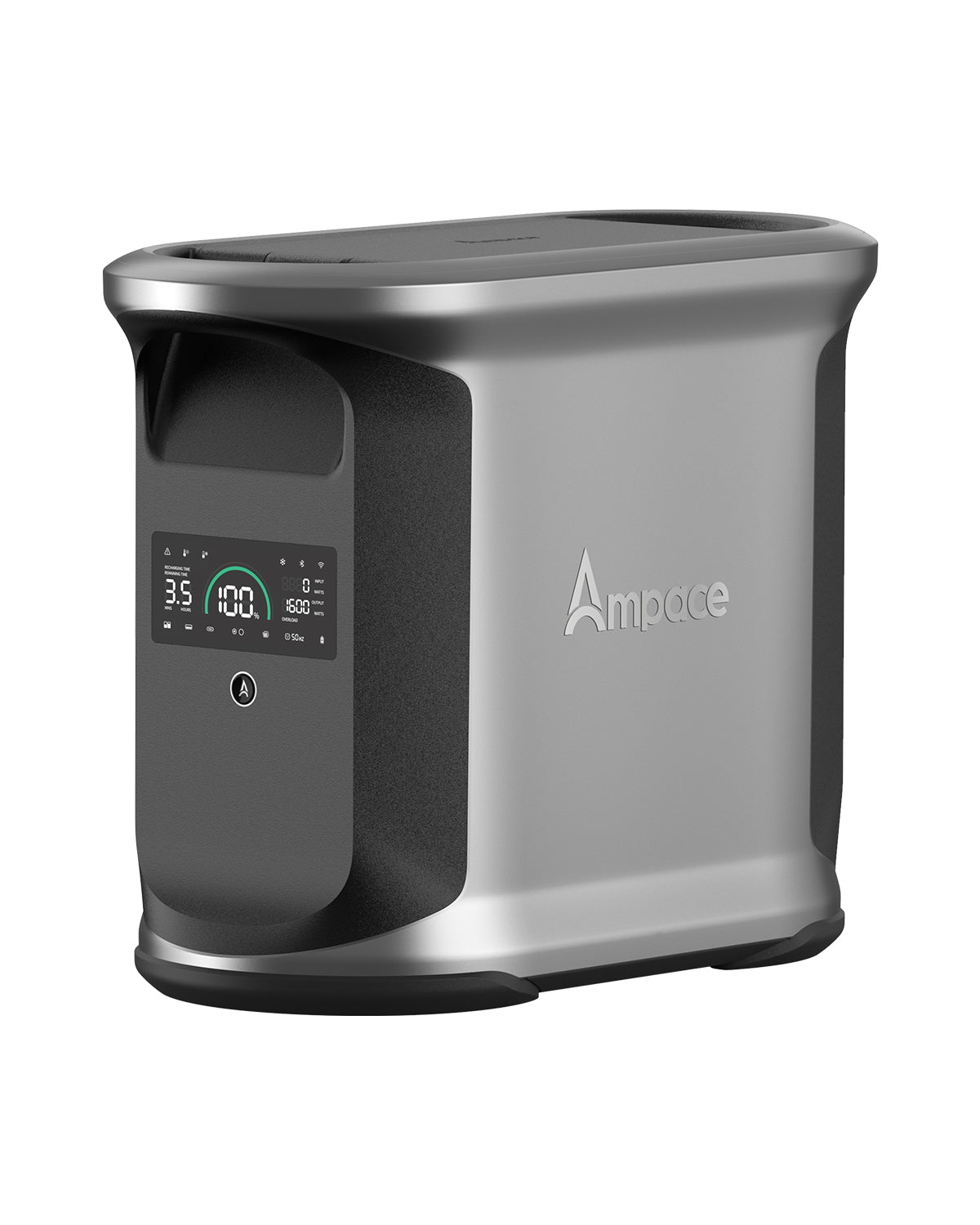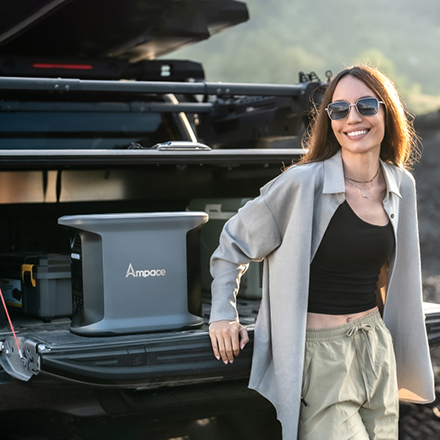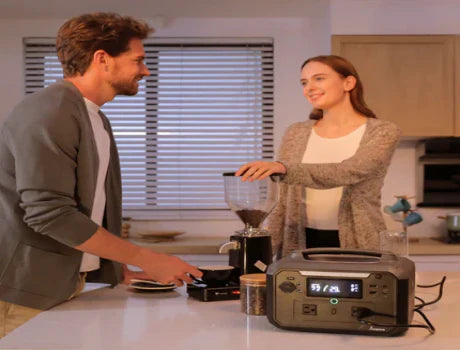The Secret to Sizing Your Solar System: A Practical Watts to Amps Guide
The right size for a solar system ensures you get enough power while avoiding unnecessary expenses. If your solar system is too small, it won't generate enough energy, and you might rely on the grid when you need it most. On the other hand, if it's too large, you will waste money on extra capacity you do not need. Proper sizing is key to getting a balance between performance and cost-efficiency. This process involves understanding how much energy you use and ensuring your system can provide the right amount without going overboard. A correctly sized system saves you money and reduces environmental impact by minimizing waste.

Why Solar System Sizing is Important
Sizing a solar system is a vital step before installation. The user must ensure that the system's capacity matches their power needs. If the solar system is too small, it won't generate enough energy, and the user will rely on the grid or run out of stored power when it's most needed.
On the other hand, if the system is too large, the user will waste a significant amount of money. Solar panels, batteries, and inverters all come at a cost. Paying for excess capacity can be financially burdensome. A correctly sized solar system strikes a balance: it provides energy without breaking the bank. Every component, from batteries to panels, will work at its best to deliver optimal energy. A well-sized solar system also proves to be beneficial in the long run. The user can save money by avoiding high electricity bills and reducing maintenance costs, as the system won't be over- or underused.
By properly sizing the system, the user can save hundreds or even thousands of dollars by cutting these extra costs. Proper sizing is also essential for the environment, as it ensures the user consumes only the energy they need, reducing waste. This makes the user's home or business more sustainable and eco-friendly.
Understanding Basic Electrical Terms
Before sizing a solar system, users need to understand basic electrical terms. Essential terms include watts, amps, and volts. A watt indicates the power a device consumes. For example, if a device is rated at 100 watts, it uses 100 watts per hour.
An amp measures the current flow, similar to how water flows through a pipe: the more amps, the more current flows through the pipe. A volt is the pressure that pushes electricity, similar to water pressure pushing water through a pipe.
The relationship between these three terms is simple:
Watts = Volts × Amps
This can be rearranged to:
Amps = Watts ÷ Volts
For example, let's say a user has a solar light that uses 60 watts and operates on 12 volts. Using the formula:
Amps = 60 ÷ 12
This means the solar light will use five amps of energy. This formula is key to sizing the solar system. If the user knows the wattage and voltage, they can calculate the amp usage of their devices.
Watts to Amps Conversion Formula
The Watts to Amps Conversion Formula is straightforward:
Amps = Watts ÷ Volts
This is the core step in solar system sizing, as it tells the user how much current their device draws from the system. That number is crucial for selecting the correct batteries, inverters, panels, and cables.
Why it matters for solar sizing:
Batteries are rated in amp-hours (Ah).
Inverters and charge controllers must be capable of handling the amps.
Cables must be thick enough to carry the current.
Therefore, converting watts to amps first is essential for accurate sizing.
Steps for Beginners:
1. Find the device's power in watts (check the label).
2. Choose the system voltage (12V, 24V, or 48V are common).
3. Divide the watts by the volts. The result will give the amps.
4. Use this amp number to select the correct battery Ah, inverter rating, and cable size.
Examples with steps:
Example A: 100 W device on a 10 V system.
Step 1: Watts = 100
Step 2: Volts = 10
Step 3: Amps = 100 ÷ 10 = 10 A
Example B: 300 W device on a 25 V system.
Amps = 300 ÷ 24 = 12.5 A
Example C: 600 W device on a 48 V system.
Amps = 600 ÷ 48 = 12.5 A
Factors That Affect Solar Sizing
Several factors influence the required size of a solar system. The first is the location and the number of sunlight hours. If the user lives in a sunny area, they will need fewer panels. However, if they live in a cloudy or rainy area with low sunlight, more panels will be required to generate the necessary energy.
Panel efficiency is another crucial factor. High-efficiency solar panels generate more energy in a smaller space. On the other hand, low-efficiency panels produce less energy, which can be useful for users with limited space to install panels. While lower-efficiency panels might be cheaper, they generate less output.
Battery storage is also critical. A larger battery can store more energy, ensuring the user has enough power at night or on cloudy days. A smaller battery means less backup power, requiring users to oversize their solar panels to compensate.
System voltage also plays a key role in sizing. A higher-voltage system, like 48V, requires fewer amps for the same wattage, reducing the need for thick cables and minimizing power loss. A lower-voltage system, such as 12V, requires more amps and thicker cables.

Sizing Your Ampace Solar Generator
Sizing your solar system correctly starts with understanding the conversion between watts and amps. For example, knowing how many amps it draws when you use the Ampace Andes 1500 Solar Generator will help determine how much energy it can supply for your devices. This solar generator offers up to 600W of solar input, perfect for off-grid activities like camping or RV trips. Calculating the watts and converting them to amps ensures you're using the right system to power your needs without excess capacity.
The Ampace Andes 600 Pro Solar Generator also follows this principle. With A-Boost technology, it charges from 0 to 80% in just 1 hour, offering up to 1800W of power. To understand how this system fits your requirements, knowing how to convert the watts into amps is essential. This process will guide you in choosing the right battery size, inverter, and cables. Whether you're using the Andes 1500 or 600 Pro, knowing the amps your devices use will help you optimise the system for better performance, longer lifespan, and maximum efficiency.
Common Mistakes in Solar Sizing
Many people make common mistakes when sizing their solar systems, leading to higher costs or inadequate power. One of the most frequent mistakes is neglecting inverter losses. Inverters convert DC power from the solar system into AC power for use in the home, but the process is not 100% efficient. Most systems lose around 5% to 10% of power during conversion. If the user doesn't account for this loss, the system will produce more energy than it can use effectively.
Another mistake is not accounting for future power needs. Over time, users may add more devices, appliances, or even electric vehicles. If the system is sized only for current usage, it will quickly become too small. Adding more solar panels in the future can be expensive.
A common mistake is failing to consider the challenges of different weather conditions. During the winter, the days are shorter, and the sun's angle is lower, reducing the amount of energy produced. If the system is designed only for summer conditions, it may struggle to meet energy demands in the winter months.
Lastly, many people rely solely on peak sun hours for their calculations. While this provides a general idea of the system's output, real-world factors like cloudy days, shade, and dust accumulation on the panels can reduce performance. Addressing these issues ensures a more reliable system that performs well year-round.
Conclusion
Sizing a solar system begins with understanding watts and converting them into amps. This simple step is vital for selecting the right panels, batteries, and inverters. Proper sizing ensures the user receives enough energy without wasting power on unnecessary capacity. It's also crucial to account for seasonal variations and future energy needs. By calculating the watts-to-amps conversion, users can determine their energy requirements and design a system that provides reliable power for years. A well-sized solar system saves money, reduces waste, and gives the user dependable energy for the long term.
FAQs
Why is solar system sizing so important?
Sizing your solar system properly ensures that you get enough energy to meet your needs without wasting money on unnecessary capacity. A system that is too small won't generate enough power, while one that's too large will cost you more than needed.
What are the basic electrical terms I need to understand?
The key terms are watts (the power a device uses), amps (the flow of electrical current), and volts (the pressure that drives the current). Understanding these helps you calculate your system's requirements and make informed decisions.
How do I convert watts to amps?
Use this simple formula: Amps = Watts ÷ Volts. This helps you understand how much current your device will draw, which is essential for selecting the right components like batteries, inverters, and cables.
What factors should I consider when sizing a solar system?
Location and sunlight hours, panel efficiency, battery storage, and system voltage all impact the solar system size you need. For example, a sunny area requires fewer panels, while cloudy areas need more to generate the same amount of energy.
What are common mistakes in solar sizing?
Common mistakes include neglecting inverter losses, not accounting for future energy needs, overlooking seasonal weather changes, and relying only on peak sun hours. These factors can lead to overpaying for excess capacity or underestimating the energy needed.





